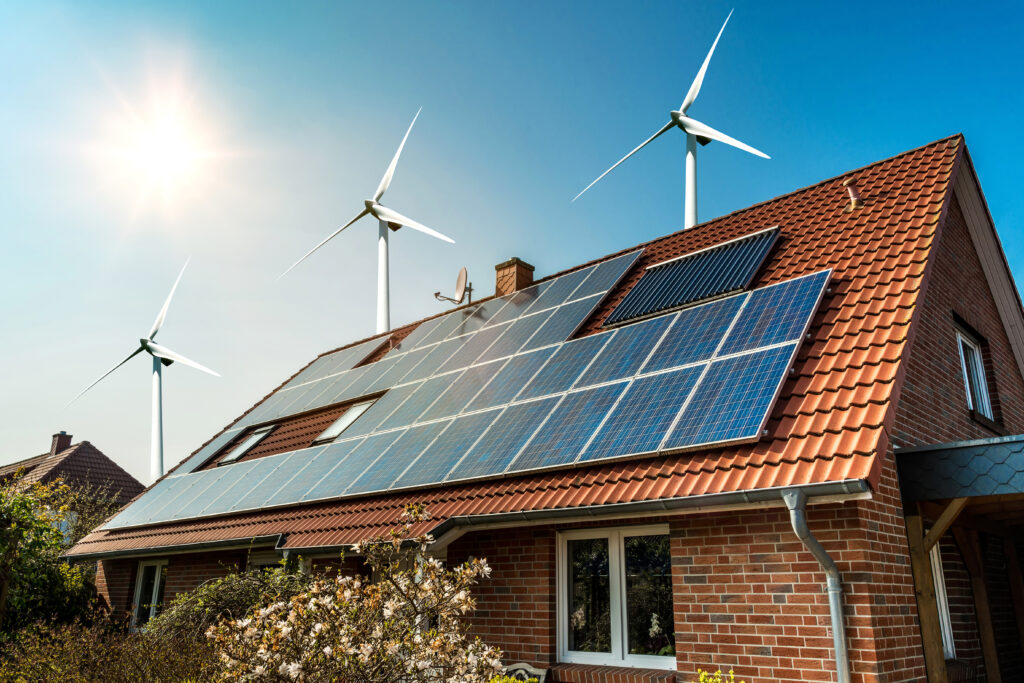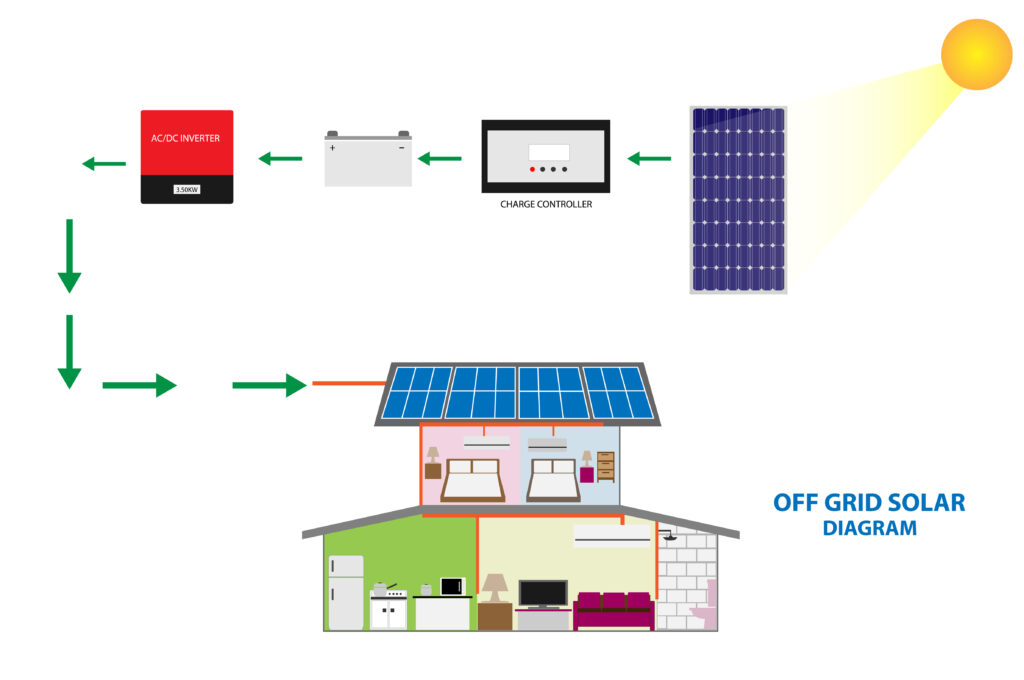Making Your Own Daring, Elegant Off-the-Grid House
An off-the-grid house is completely energy self-sufficient. As its name suggests, it doesn’t need to be hooked up to the power grid to function normally and at full energy capacity.
Upgrading your house to operate off-the-grid has a ton of benefits. While it can have a high up-front cost–usually about $20,000–it pays itself off quickly; you earn back your $20,000 twice in the first 20 years. Going off-the-grid can also protect your home from power outages or shortages. The benefits–both financial and otherwise–far outweigh the drawbacks.
The up-front cost may sound intimidating, but going off the power grid isn’t particularly difficult; there are only really three steps to consider. So here’s how to upgrade your energy-dependent bungalow into a beacon of self-sufficiency!
Step 1: Appliances
The primary requirement of going off-the-grid is the installation of a clean energy generator and battery (see the next section). But it’s essential to consider your appliances first. If your appliances are rattling and rusting away, you could replace them with a more energy-efficient alternative. This decreases your energy bill and therefore decreases how much energy your generator needs to produce.
For example, let’s say you have a ten-year-old HVAC unit. Energy.gov reports that replacing this ten-year-old unit may save you 20-40% of your cooling energy costs, which amounts to 5% of your total energy bill. Then upgrading your HVAC unit means that when you install solar panels, you’ll need only 95% of the energy generation capacity that you needed before.
A shiny new HVAC unit costs $4,000, but would save you $1,000 on solar panels. Additionally, it would help you earn the $20,000 up-front cost back even quicker.
Step 2: Energy generators
If you’re not connected to the power grid, you need an alternative source of energy (unless you’ve resigned yourself to the Dark Ages way of life). Solar panels, wind turbines, or hydropower turbines are all great options. Solar panels are more mainstream and are a good fit for pretty much any house. But if you live in an area that gets a lot of wind, or have a river running through your backyard, wind turbines or hydropower may also be viable.
An average-sized solar installation is 28-34 panels, in addition to several other components of the system, which in total costs between $12,000 and $18,000 up front. This number and price depends on the energy footprint of your home, however (and the more energy-efficient your appliances, the less the solar panels will cost you).
Powering your home completely with wind turbines or hydropower is possible, but initially more expensive than with solar. Wind turbines cost an estimated $22,000 up front. Hydropower costs about $25,000 up front, but has the potential to earn you much more energy than you need.
While each of these options has a different up-front cost, they could each save you at least $20,000 over 20 years.
In addition to the power generator itself, you’ll need a battery (although yours will need to be much larger than the typical Energizer Bunny type). Without a battery, the generator won’t be able to provide a constant source of energy; if the wind stops blowing, for example, the wind turbines stop producing energy. If you want your lights to turn on even when the wind isn’t blowing or the sun isn’t shining, you’ll need a battery.
A good-sized battery is about 13.5 kWh. This stores enough energy to run an entire home for 14-17 hours. A battery this size costs between $4,000 and $7,000, which is included in the $20,000 up-front cost.
Step 3: (Optional) Passive solar
Once you’ve upgraded your appliances and installed a clean-energy power generator, your home is well on its way to becoming off-the-grid. But if you’re looking for a little extra off-the-grid powers, you can increase its passive solar capabilities. This will help you earn your $20,000 back even faster.
Active solar refers to the ability of electronics like solar panels to take the power of the sun and transform it into energy. Passive solar is a home’s inherent ability to use the power of the sun to reduce its energy bill. This can be done by careful planning of windows, overhangs, home materials, and insulation.
The quickest and easiest action you could take to improve your home’s passive solar capability is to be cognizant of its windows. When it’s hot out and you want your home to stay cool, you can draw your curtains.
When it’s cool (and sunny) out and you want your home to heat up, you can leave the curtains open. The sun can then enter the house. It hits the flooring, and its energy absorbs into the floor and passively heats the house.
Even just drawing your curtains when it’s hot out and opening them when it’s cool can save you a significant amount of money–reportedly up to $100 a month.
While going off-the-grid seems like a lot of work at first, in reality, there are really only three things to consider. Additionally, it has countless benefits and will save you $20,000 within 20 years of the upgrade. So if you’re considering upgrading from energy-dependency to independency–do it! Independence is always a reason for celebration 🙂
References:
https://news.energysage.com/what-does-it-mean-to-go-off-the-grid/
https://www.instructables.com/id/Take-Your-Home-Off-Grid-the-Smart-Way/
https://www.gogreenair.net/advantages-and-adjustments-is-going-off-grid-worth-it/
https://www.energy.gov/articles/you-asked-we-are-answering-your-home-efficiency-questions



